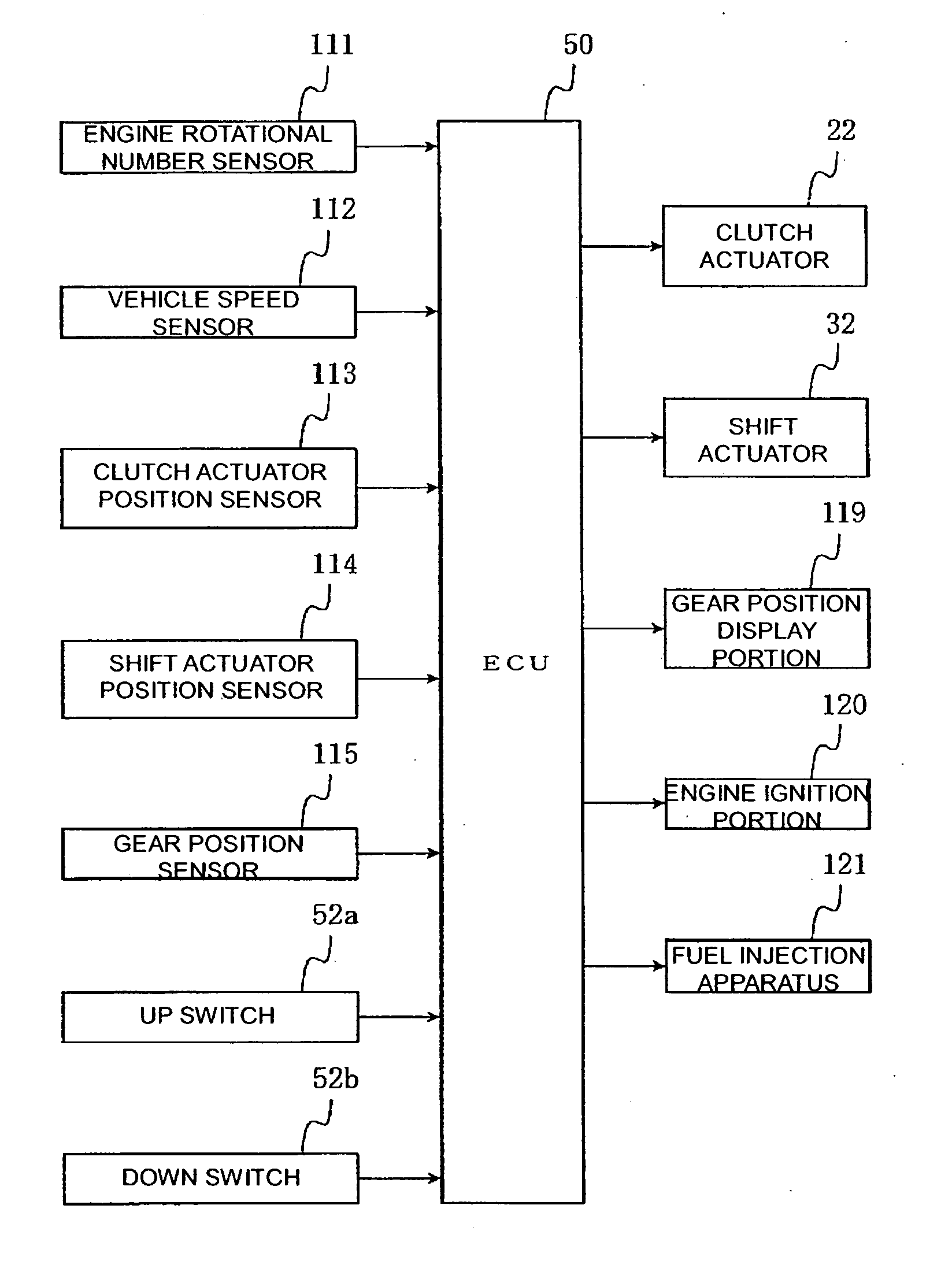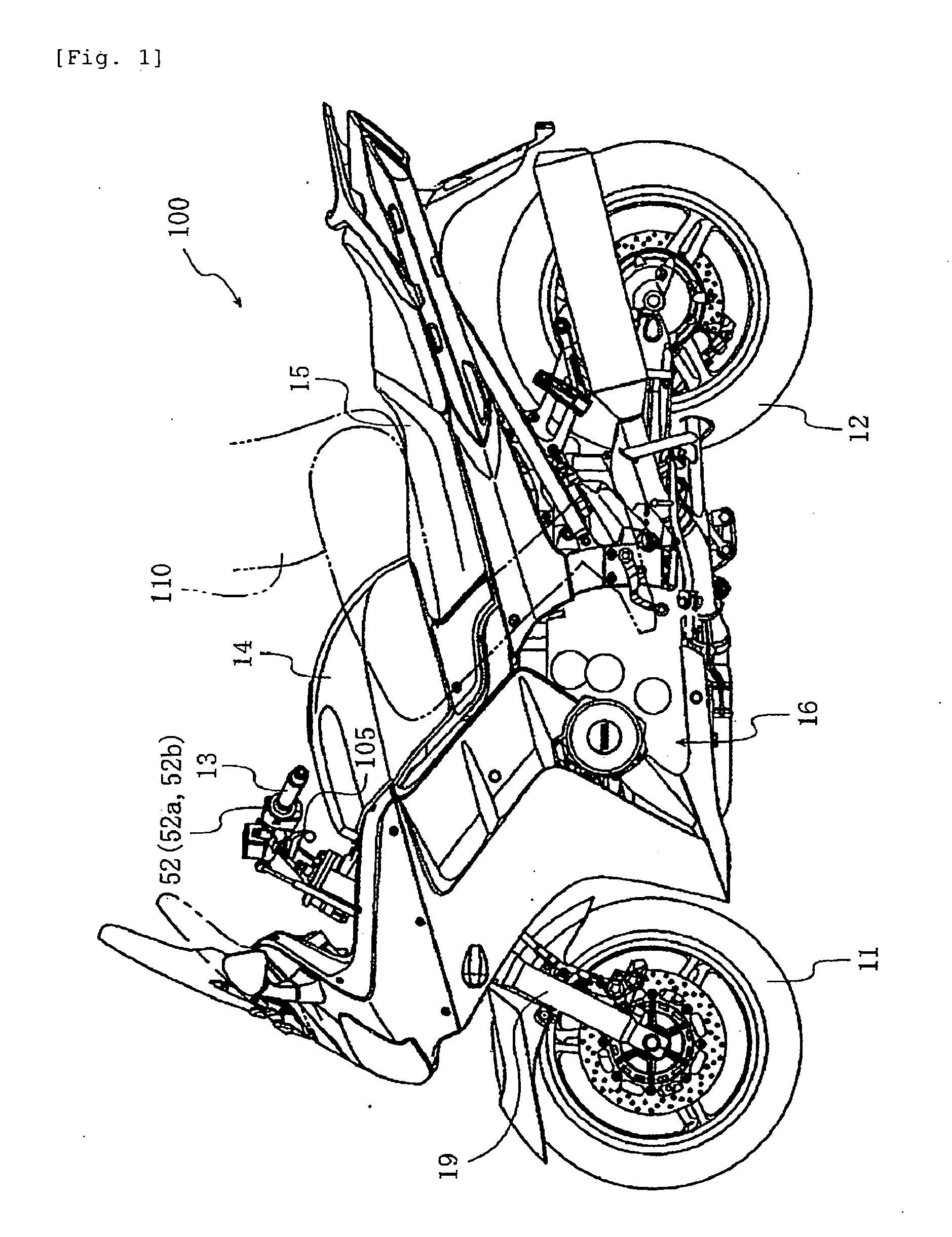Riding Type Vehicle
a technology of riding type and clutch, which is applied in the direction of instruments, jet propulsion mountings, cycles, etc., can solve the problems of unsmooth shift change operation, extremely difficult control of automatic speed change operation, and posed problems, so as to promote clutch controllability and shorten the time period of gear chang
- Summary
- Abstract
- Description
- Claims
- Application Information
AI Technical Summary
Benefits of technology
Problems solved by technology
Method used
Image
Examples
first embodiment
[0144] The pinion gear 101 can be provided with the shaft 77 at a position eccentric to a center of rotation, and the front end portion 85b of the screw member 85 of the first connecting portion 79 can be pivotably connected to the shaft 77. Further, in the pinion gear 101, a locking pin 102 can be provided to be projected at a position contiguous to the shaft 77, and the one end portion 80a of the tension spring 80 similar to that of the first embodiment is caught by the locking pin 102.
[0145] Thereby, as shown by FIG. 20 through FIG. 22, the first connecting portion 79 can be configured to displace similar to that of the first embodiment by rotating the shaft 77 centering on the center of rotation when the pinion gear 101 is rotated. Further, by the tension spring 80, the pinion gear 101 can be urged in a direction of disconnecting the clutch 20.
[0146] Further, in place of the drive lever 93 substantially in a linear shape of the first embodiment, according to present embodiment,...
second embodiment
[0149] Further, not only the clutch 20 can be disengaged by the clutch actuator 22 as described above, but also the clutch 20 can manually be disengaged by operating the clutch lever 105. That is, since the first connecting portion 79 and the second connecting portion 82 of the operating force transmitter mechanism 69 are arranged to be separate from each other and approach each other, even when the clutch actuator 22 is not operated and the position of the first connecting portion 79 is not displaced, the second connecting portion 82 can be displaced. Therefore, by pulling the wire 104 by grabbing the clutch lever 105, the drive lever 103 connected with the second connecting portion 82 by way of the wire 104 can be pivoted regardless of driving the clutch actuator 22.
[0150] Therefore, the clutch 20 is disengaged by pivoting the drive shaft 103b by pivoting the drive lever 103 and therefore, also manual operation can be used and a way of use can be improved.
[0151] With regard to o...
third embodiment
[0153] Next, a third illustrated embodiment of the invention will be explained in reference to FIG. 23 through FIG. 25. Also in the description of the third embodiment, a description will be given of a method capable of enlarging a partial clutch engagement region by providing a bias member at the clutch for enlarging the partial clutch engagement region.
[0154]FIG. 23(a) is side sectional view of the clutch 20 in the connected state according to the third illustrated embodiment, FIG. 23(b) is a partially enlarged view thereof. FIG. 24(a) is a side sectional view of the clutch 20 in the disconnected state according to the third illustrated embodiment, FIG. 24(b) is a partially enlarged view thereof. FIG. 25(a) is a side sectional view of the clutch 20 in the partial clutch engagement state according to the third illustrated embodiment, and FIG. 25(b) is a partially enlarged view thereof.
[0155] As shown by FIG. 23, the clutch 20 can include an inner support member 214 supported by th...
PUM
 Login to View More
Login to View More Abstract
Description
Claims
Application Information
 Login to View More
Login to View More - R&D
- Intellectual Property
- Life Sciences
- Materials
- Tech Scout
- Unparalleled Data Quality
- Higher Quality Content
- 60% Fewer Hallucinations
Browse by: Latest US Patents, China's latest patents, Technical Efficacy Thesaurus, Application Domain, Technology Topic, Popular Technical Reports.
© 2025 PatSnap. All rights reserved.Legal|Privacy policy|Modern Slavery Act Transparency Statement|Sitemap|About US| Contact US: help@patsnap.com



